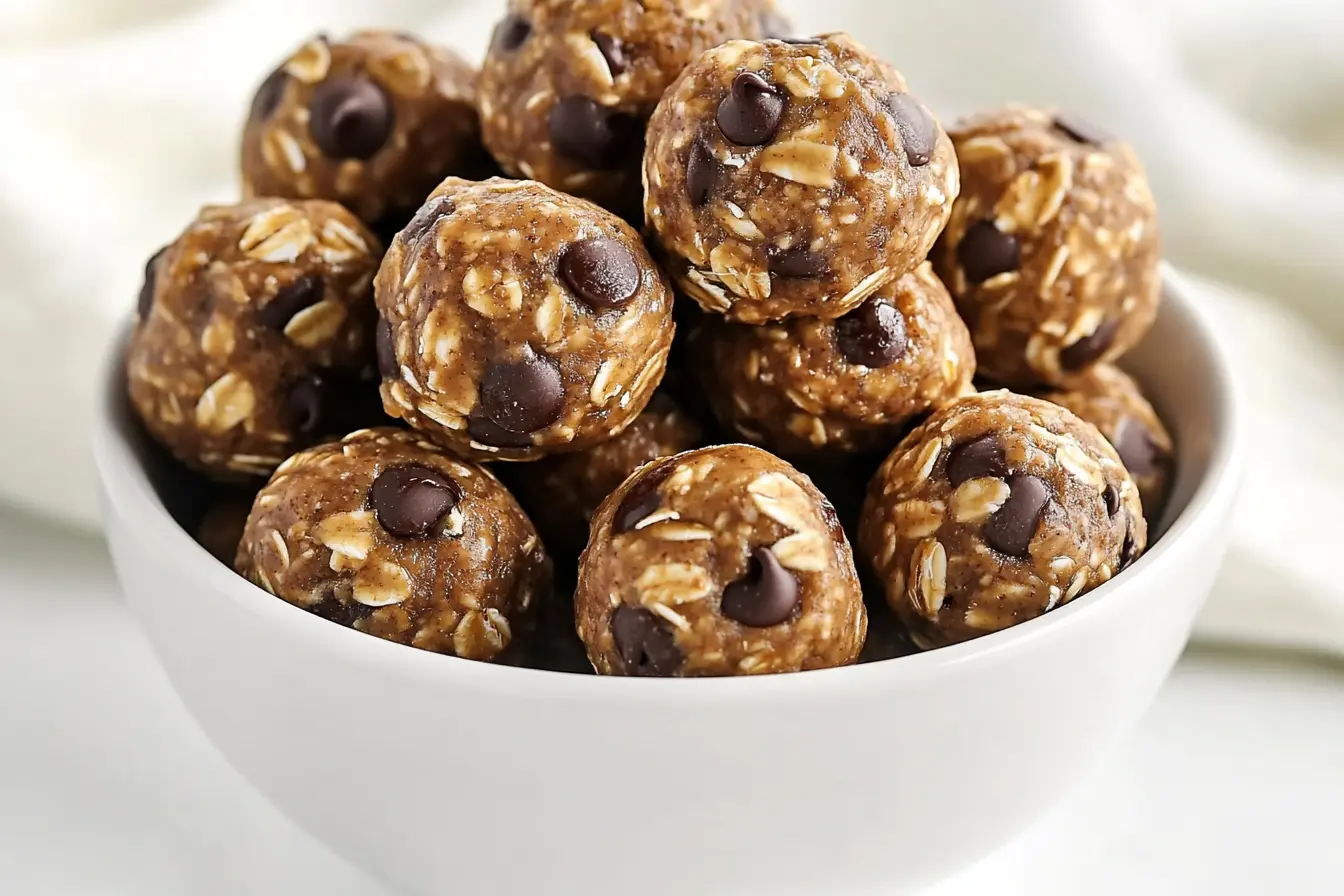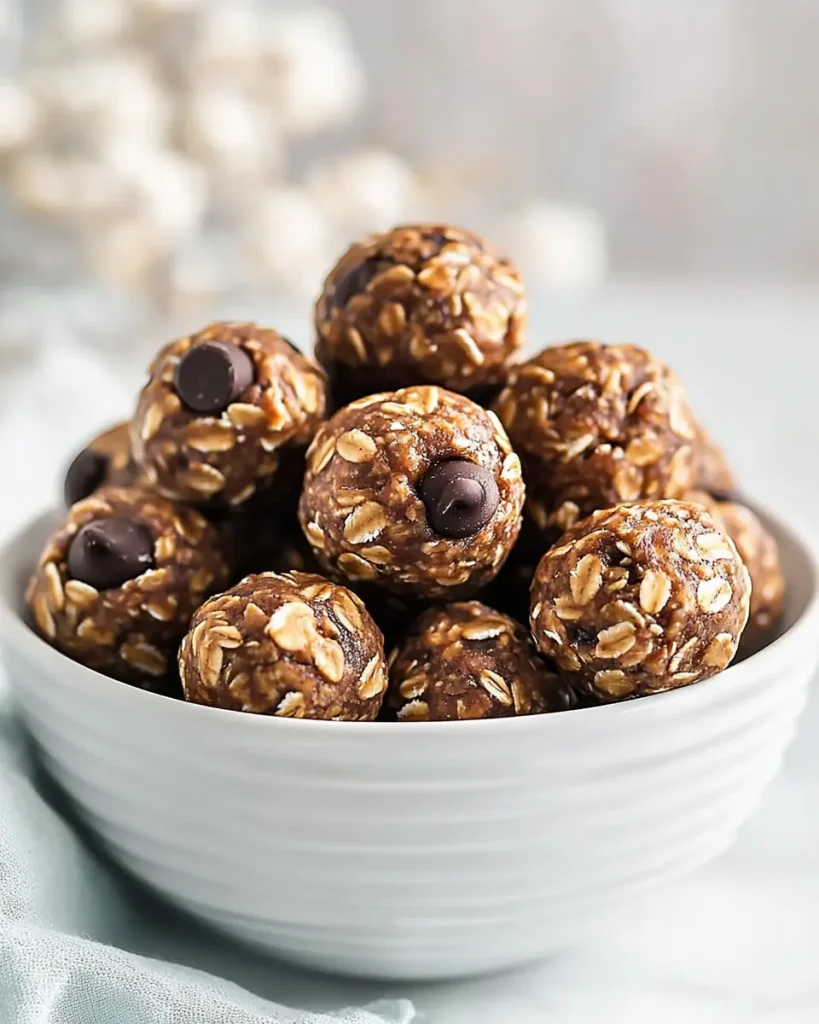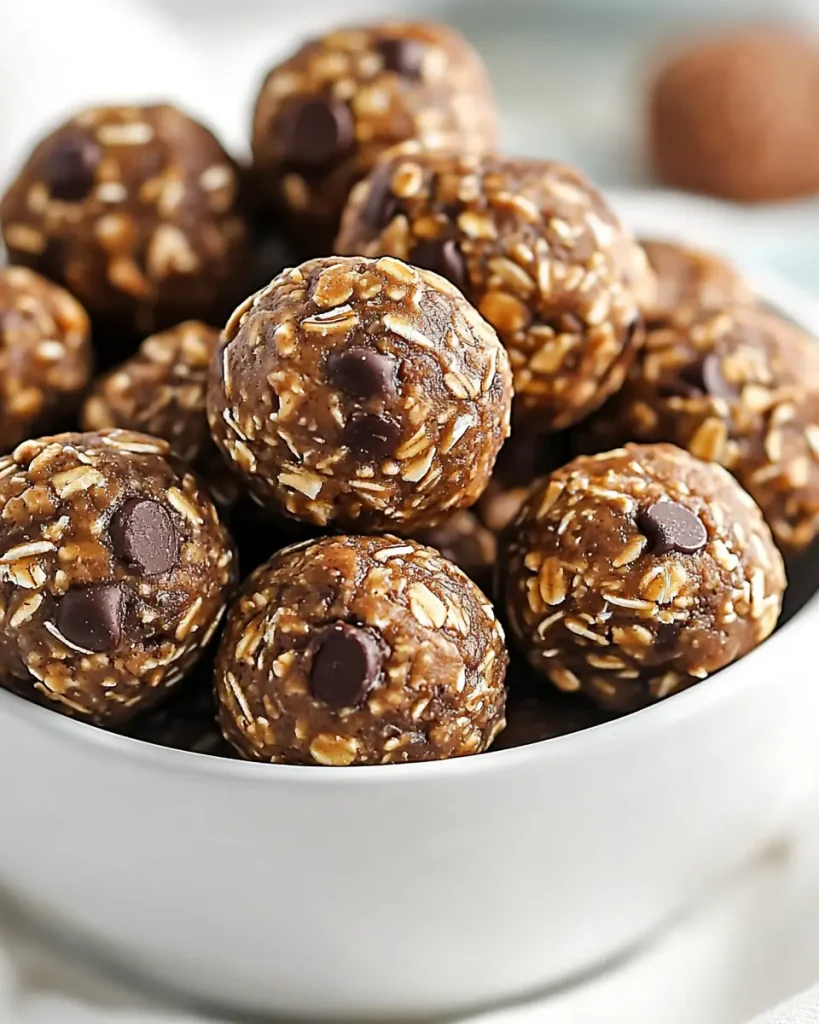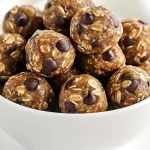Introduction
In today’s fast-paced world, finding a snack that is both nutritious and convenient can be a challenge. Enter protein balls, the perfect solution for health-conscious individuals seeking a quick, energy-boosting treat. These bite-sized delights are packed with high-quality protein, healthy fats, and natural sweeteners, making them an ideal choice for anyone looking to fuel their body with wholesome ingredients. Whether you’re an athlete, a busy professional, or simply someone who loves a tasty yet healthy snack, protein balls are a versatile option that caters to all.
Protein balls have gained immense popularity in recent years, thanks to their simplicity and nutritional benefits. They are easy to make, require no baking, and can be customized to suit individual tastes and dietary preferences. In this article, we will explore the history of protein balls, their health benefits, and provide a step-by-step recipe to help you create your own batch at home. We will also delve into the key ingredients that make protein balls a powerhouse of nutrition and offer tips on how to customize them to your liking.
What Are Protein Balls?
Protein balls, also known as energy balls or protein bites, are small, round snacks made from a combination of oats, nut butter, sweeteners, and protein powder. They are typically no-bake, making them a quick and easy option for anyone looking to prepare a healthy snack in minutes. The concept of protein balls originated from the need for portable, nutrient-dense snacks that could provide sustained energy without the crash associated with sugary treats.
The rise of protein balls can be traced back to the growing interest in clean eating and fitness culture. As more people began to prioritize their health, the demand for snacks that were both delicious and nutritious skyrocketed. Protein balls quickly became a staple in the diets of athletes, gym-goers, and health enthusiasts due to their high protein content, low sugar levels, and versatility.
Health Benefits of Protein Balls
Protein balls are more than just a tasty snack—they are a nutritional powerhouse that offers a wide range of health benefits. Here’s why they should be a part of your daily routine:
- High Protein Content: Protein is essential for muscle repair, growth, and recovery. Each protein ball is packed with protein from ingredients like peanut butter, chia seeds, and protein powder, making them an excellent post-workout snack.
- Sustained Energy Release: Unlike sugary snacks that cause energy spikes and crashes, protein balls provide long-lasting energy thanks to their combination of complex carbohydrates and healthy fats.
- Weight Management: The high protein and fiber content in protein balls help keep you full and satisfied, reducing the likelihood of overeating or reaching for unhealthy snacks.
- Nutrient-Dense: Protein balls are loaded with vitamins, minerals, and antioxidants from ingredients like oats, chia seeds, and dark chocolate, making them a nutrient-rich choice.
- Digestive Health: The fiber in oats and chia seeds promotes healthy digestion and supports gut health.
Key Ingredients in Protein Balls
The magic of protein balls lies in their simple yet powerful ingredients. Each component plays a crucial role in delivering the nutritional benefits and delicious flavor that make these snacks so popular. Let’s take a closer look at the key ingredients:
1. Oats: The Fiber Powerhouse
Oats are the base ingredient in protein balls, providing a chewy texture and a nutrient boost. They are an excellent source of dietary fiber, which aids in digestion and helps regulate blood sugar levels. Oats also contain complex carbohydrates, which provide a steady release of energy, making them ideal for sustained fuel throughout the day.
2. Peanut Butter: Healthy Fats & Protein
Peanut butter is a rich source of healthy fats and plant-based protein, making it a key ingredient in protein balls. It adds creaminess and flavor while contributing to the satiety factor. The monounsaturated fats in peanut butter are heart-healthy and help keep you full for longer.
3. Maple Syrup: Natural Sweetener
Maple syrup serves as a natural sweetener in protein balls, providing a touch of sweetness without the need for refined sugar. It contains antioxidants and minerals like manganese and zinc, making it a healthier alternative to processed sweeteners.
4. Chia Seeds: Superfood Addition
Chia seeds are a superfood that adds a nutritional punch to protein balls. They are rich in omega-3 fatty acids, fiber, and protein, making them a great addition for boosting overall health. Chia seeds also help bind the ingredients together, giving the balls a perfect texture.
5. Chocolate Protein Powder: Extra Nutrition Boost
Chocolate protein powder not only enhances the flavor of protein balls but also increases their protein content. It provides essential amino acids that support muscle recovery and growth, making it a must-have ingredient for fitness enthusiasts.
6. Dark Chocolate Chips: A Touch of Antioxidants
Dark chocolate chips add a decadent touch to protein balls while providing antioxidants that support heart health. Opt for 70% dark chocolate or higher to maximize the health benefits and keep the sugar content in check.
Step-by-Step Recipe for Protein Balls
Now that we’ve covered the benefits and ingredients, let’s dive into the step-by-step process of making protein balls. Follow these detailed instructions to create a batch of delicious, nutrient-packed snacks.
Ingredients
- 1 cup rolled oats
- ½ cup peanut butter
- ⅓ cup maple syrup
- 2 tablespoons chia seeds
- 1 tablespoon chocolate protein powder
- ½ cup dark chocolate chips
Instructions
1. Mixing the Ingredients
In a large mixing bowl, combine the rolled oats, peanut butter, maple syrup, chia seeds, chocolate protein powder, and dark chocolate chips. Use a spatula or your hands to mix the ingredients thoroughly until they form a sticky, cohesive dough. Ensure that all the ingredients are evenly distributed for a consistent texture.
2. Chilling the Mixture
Once the mixture is well combined, cover the bowl with plastic wrap or a lid and place it in the refrigerator for 1 hour. Chilling the mixture helps firm it up, making it easier to shape into balls. It also allows the chia seeds to absorb moisture, enhancing the texture.
3. Rolling and Storing the Balls
After the mixture has chilled, remove it from the refrigerator. Use a cookie scoop or tablespoon to portion out the dough. Roll each portion between your palms to form smooth, round balls. If the mixture feels too sticky, lightly wet your hands to prevent sticking.
Place the rolled balls on a parchment-lined tray and return them to the refrigerator for an additional 30 minutes to set. Once firm, transfer the protein balls to an airtight container and store them in the refrigerator for up to 2 weeks.
Flavor Variations and Customizations
One of the best things about protein balls is their versatility. You can easily customize the recipe to suit your taste preferences or dietary needs. Here are some ideas for flavor variations:
- Almond Butter: Replace peanut butter with almond butter for a nutty twist.
- Honey: Use honey instead of maple syrup for a different sweetness profile.
- Coconut Flakes: Add unsweetened coconut flakes for a tropical flavor.
- Vanilla Protein Powder: Swap chocolate protein powder for vanilla for a milder taste.
Best Times to Eat Protein Balls
Protein balls are a versatile snack that can be enjoyed at any time of the day. Here are some ideal times to consume them:
- Pre-Workout: The combination of carbs and protein provides a quick energy boost.
- Post-Workout: Helps with muscle recovery and replenishes energy stores.
- Mid-Morning or Afternoon Snack: Keeps you full and satisfied between meals.
- Dessert: A healthier alternative to sugary treats.
Common Mistakes and How to Avoid Them
- Sticky Dough: If the mixture is too sticky, add more oats or protein powder to balance the texture.
- Dry Dough: If the mixture is too dry, add a bit more peanut butter or maple syrup to moisten it.
- Imbalanced Flavors: Taste the mixture before chilling and adjust the sweetness or nuttiness as needed.
FAQs About Protein Balls
1. How long do protein balls last?
Protein balls can be stored in the refrigerator for up to 2 weeks or frozen for up to 3 months.
2. Can I use a different type of nut butter?
Yes, you can substitute peanut butter with almond butter, cashew butter, or any other nut butter.
3. Are protein balls gluten-free?
To make gluten-free protein balls, ensure that you use certified gluten-free oats.
Conclusion
Protein balls are a simple, nutritious, and delicious snack that can easily fit into any lifestyle. With their high protein content, natural ingredients, and endless customization options, they are a must-try for anyone looking to boost their energy and nutrition. By following this detailed recipe and tips, you can create your own batch of protein balls and enjoy the benefits of this wholesome snack. Whether you’re fueling up for a workout or satisfying a sweet craving, protein balls are the perfect choice.
PrintProtein Balls Recipe: Healthy Energy Snacks
- Prep Time: 10 minutes
- Cook Time: 0 minutes (no baking required!)
- Total Time: 1 hour 10 minutes (includes chilling)
- Yield: 12–15 protein balls 1x
- Category: Snacks / Healthy Treats
- Method: No-Bake
- Cuisine: Universal
- Diet: Gluten Free
Description
Looking for a quick, healthy snack that’s packed with energy and flavor? These no-bake protein balls are the perfect treat to keep you going! Easy to make and even easier to enjoy. Ready to whip up a batch? Let’s get started!
Ingredients
- 1 cup rolled oats
- ½ cup peanut butter
- ⅓ cup maple syrup
- 2 tablespoons chia seeds
- 1 tablespoon chocolate protein powder
- ½ cup dark chocolate chips
Instructions
- In a large bowl, combine the rolled oats, peanut butter, maple syrup, chia seeds, chocolate protein powder, and dark chocolate chips. Mix everything together until it’s well blended.
- Cover the bowl and place it in the refrigerator for one hour.
- After chilling, scoop out the mixture using a cookie scoop and roll it between your hands to form a ball. You may need to press firmly to shape it.
- Store the protein balls in the refrigerator in an airtight container.
Notes
- Sticky Situation? If the mixture feels too dry, add a splash of milk (dairy or plant-based) or a bit more nut butter to help it bind.
- Too Wet? If it’s too sticky, sprinkle in a few more oats or a touch of protein powder to balance it out.
- Customize Your Flavor: Swap out ingredients to suit your taste! Try almond butter instead of peanut butter, or use honey instead of maple syrup.
- Chill Out: Don’t skip the chilling step—it makes rolling the balls so much easier!
- Storage Tips: Keep your protein balls in the fridge for up to a week, or freeze them for up to 3 months. They’re perfect for grab-and-go snacking!
- Portion Control: Use a cookie scoop or tablespoon to ensure all your balls are the same size—it makes them look neat and helps with portioning.
Nutrition
- Serving Size: 1 ball
- Calories: 120 kcal
- Sugar: 6g
- Sodium: 25mg
- Fat: 6g
- Saturated Fat: 2g
- Unsaturated Fat: 3g
- Trans Fat: 0g
- Carbohydrates: 12g
- Fiber: 2g
- Protein: 5g
- Cholesterol: 0mg
Keywords: No-Bake Protein Balls, Healthy Snacks, Energy-Boosting Treats, Quick Recipes, Gluten-Free Snacks, Vegan Protein Balls, Meal Prep Ideas, Easy No-Bake Treats, Chia Seeds Recipes, Dark Chocolate Snacks



